106 and counting: Gaza journalists continue to pay price for exposing genocide
By Humaira Ahad
He believed it was his “moral duty to tell the world about what he was seeing,” reads Ali Jadallah’s eulogy for his murdered Gaza-based journalist brother Belal Jadallah.
Amid the Israeli regime’s genocidal war against the besieged coastal territory, truth has been the biggest casualty as disseminators of truth continue to be killed in the line of duty.
The death toll of journalists in the Gaza Strip since October 7 has surged past 100, now reaching the mark of 106, making the bleeding Palestinian territory the most dangerous place for journalists today.
On Friday, Jabr Abu Hadrous, a local journalist for Al-Quds Today, was killed along with several members of his immediate family after the Israeli warplanes pounded his home in Nusseirat camp in central Gaza.
“Like me and all correspondents, we are all on Jabr's path. Our journalist colleagues all passed. This [press] vest will not protect you, not from planes, not from the tanks of the occupation, not from warplanes or drones,” one of his colleagues was quoted as saying.
“All the journalists in the world are protected when they wear a press vest, except us in Gaza. Here, the vest is a signal to kill journalists; over 100 martyrs up to this point, and the world is silent.”
The officials in Gaza say the number of journalists killed by the occupying regime forces since October 7 could be much higher as many people remain missing and are probably under the rubble.
All these journalists were killed while performing their duties and like Jadallah and Hadrous wanted the world to know about the heinous war crimes being committed by the Tel Aviv regime in Gaza.
The Committee to Protect Journalists (CPJ), the media advocacy group, says the violence against journalists in Gaza amid the current Israeli aggression is ‘unparalleled’ in the group’s history.
Journalists - deliberate targets
Palestinian journalists say the Israeli regime is deliberately targeting them to silence their voices and prevent them from laying bare the savagery being committed by the occupying regime in Gaza.
The Committee to Protect Journalists, an independent body that promotes press freedom, has expressed “concern” over the targeting of journalists and their families in the besieged territory.
According to a report published by Reporters Without Borders, Hassouna Sleem, the director of the Palestinian online news agency Quds News, and freelance photo-journalist Sary Mansour were both killed during an Israeli assault on the Bureij refugee camp in the central Gaza Strip on November 18.
They had received online death threats in connection with their work 24 hours before the murder.
Farah Omar and Rabih al-Maamari, Beirut-based journalists, working for the AlMayadeen network were the deliberate targets of an Israeli airstrike on November 25. The journalists who were reporting from the Lebanese border with occupied territories were clearly visible as media personnel.
Abudaqa, a cameraman for Al Jazeera Arabic in the Gaza Strip, was hit while reporting from a school in Khan Younis. The regime prevented rescue teams from reaching him, leaving him to bleed to death.
The Paris-based Reporters Without Borders has warned that “journalism is in the process of being eradicated in the Gaza Strip as a result of Israel’s refusal to heed calls to protect media personnel”.
“Reporters there have no safe refuge and no way of leaving. They are being killed one after another. Since 7 October, the Palestinian territory has been subjected to a veritable eradication of journalism,” it said in a statement recently.
Motaz Azaiza, a prominent journalist and social media influencer from Gaza, said he has received multiple phone calls from the Israeli army, telling him to stop exposing the crimes of the regime.
He posted screenshots of WhatsApp messages, in which he was warned by the regime’s military agents about his war reportage and even asked to leave Gaza.
Like Azaiza, many other Palestinian journalists have “received threatening calls from people” claiming to be from the Israeli army, “warning them that they are going to face severe repercussions and their families will also be targeted in the coming days” if they don’t stop covering the war.
In late October, the family of Wael Dahdouh, Al Jazeera Arabic bureau chief in Gaza, was targeted in an Israeli air raid.
The family of Nidal Hamida, a journalist working with a local Palestinian media network was also targeted, killing his wife and two young children.
Gaza- a cemetery for journalists
On December 19, Adel Zorob, a Palestinian freelance journalist who worked with multiple media outlets, was killed in an Israeli airstrike on his home in Rafah, southern Gaza, along with 25 family members,
Abdallah Alwan, a Palestinian journalist and a radio jockey, was killed in an Israeli bombardment targeting his home in Jabalia on December 18.
In his last Facebook post on December 17, Alwan wrote: “On every morning, we say that last night was the worst night in the war… All days are worse than each other. This briefly describes the war.”
Mohamed Abu Hasira, a journalist for the Palestinian news agency Wafa, was killed in an air strike on his home in Gaza along with 42 family members.
Mohamed Al Jaja, a consultant at Press-House Palestine, was killed along with his wife and two daughters when an air raid hit his home in the Nasr neighborhood in northern Gaza.
“To survive every day is exhausting,” Duaa Jabbour wrote in her last Facebook post.
The young Palestinian journalist was killed in an Israeli air strike on her home along with her husband and children in Khan Yunis, southern Gaza on December 9.
Ola Atallah, a Palestinian female journalist and a former correspondent with the Anadolu news agency was killed when the regime dropped a bomb on the house where she and her family were taking refuge.
Atallah was killed with nine members of her family, including her brother and uncles.
“How many more nights of terror and death does Gaza have to count,” Atallah, well known in social media circles, wrote in her last tweet on December 8.
Mohamed Mouin Ayyash, a Palestinian journalist and a freelance photographer, was killed when an Israeli bomb targeted his home in Nuseirat refugee camp in central Gaza on November 23.
He died along with 20 members of his family,
Ayat Khadoura, a podcast producer and a freelance journalist was killed along with an unknown number of family members in an Israeli airstrike on her home in northern Gaza.
In her last video, the young journalist said, this is “my last message to the world. We had big dreams but the only dream left now is when we die, let our bodies remain intact and recognizable and not be reduced to dismembered corpses in a bag.”
Stories of many young male and female Gazan journalists who were killed while narrating the stories of the crimes committed by the occupation in Gaza remain untold and unheard.
Many Palestinian journalists have been tearing off their protective gear in a mark of protest against the occupation for intentionally targeting the fraternity.
"It is only a matter of time until we are killed. We wait our turn, one after the other," said Salman al Bashir a Palestinian TV journalist tearing off his Press vest while mourning his colleague, Mohammed Abu Hatab who was killed by the regime’s air strike.
Plestia Alaqad, a journalist from Gaza, said she stopped wearing her vest and helmet as it increased her chances of being targeted by the Israeli forces.
Media workers in Gaza and the occupied West Bank have also been forced to abandon their reporting equipment in their offices, most of them being destroyed completely.
They continue to report under difficult circumstances with frequent communication blackouts.
Journalist organisations
Different organizations for the protection of journalists have repeatedly protested against Israel’s deliberate targeting of journalists, describing it as a war crime under international humanitarian law.
“Journalists across the region are making great sacrifices to cover this heart-breaking conflict. Those in Gaza, in particular, have paid, and continue to pay, an unprecedented toll and face exponential threats,” the CPJ said in a recent report.
“Many have lost colleagues, families, and media facilities, and have fled seeking safety when there is no safe haven or exit.”
The toll of journalists killed in Gaza since October 7 has even surpassed World War II – 69 media personnel were killed in World War II which lasted from 1939 to 1945.
“With their arbitrary air strikes, the Israeli armed forces are eliminating journalists one after the other without restraint, all while their unacceptable comments betray an open contempt for international humanitarian law,” Jonathan Dagher, the head of RSF’s Middle East desk, said in a statement.
RSF has regarded Gaza, from north to south, as a “cemetery for journalists.”
The Paris-based organization submitted a complaint to the International Criminal Court (ICC) on October 31, holding Israel responsible for perpetrating war crimes against journalists in Gaza.
VIDEO | Press TV's news headlines
VIDEO | 'War on Iran is only just beginning' ft. Laith Marouf
VIDEO | Gaza’s economy collapses due to Israeli war
VIDEO | Israel rejects US-approved Gaza technocratic committee
‘Narcissistic psychopath’: Netizens mock Trump over letter to Norway PM on Nobel Prize
Israeli forces demolish UNRWA buildings in occupied East al-Quds
Trump lashes out at allies over Greenland, shares private texts online
Iran’s Armed Forces will cut off any 'hand of aggression' against Leader: Spokesman


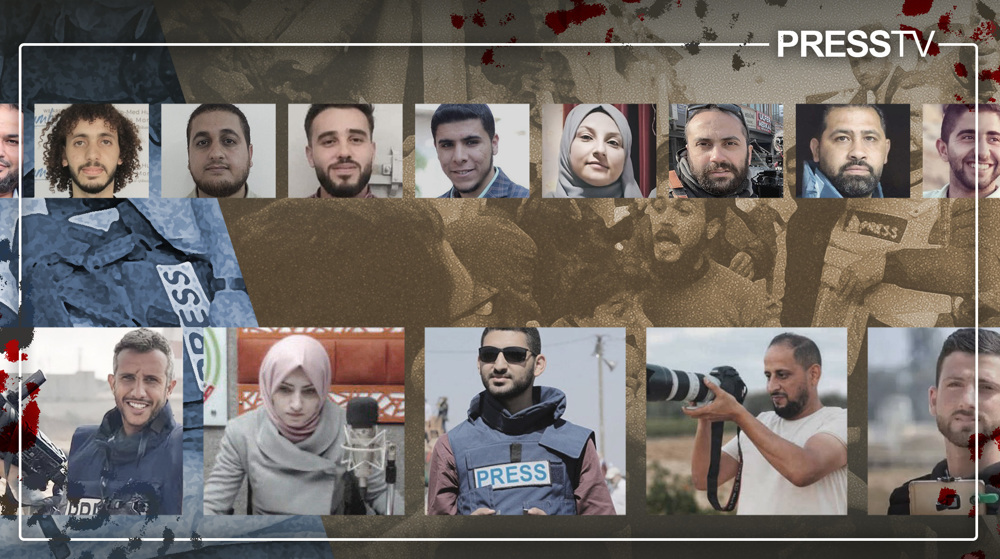
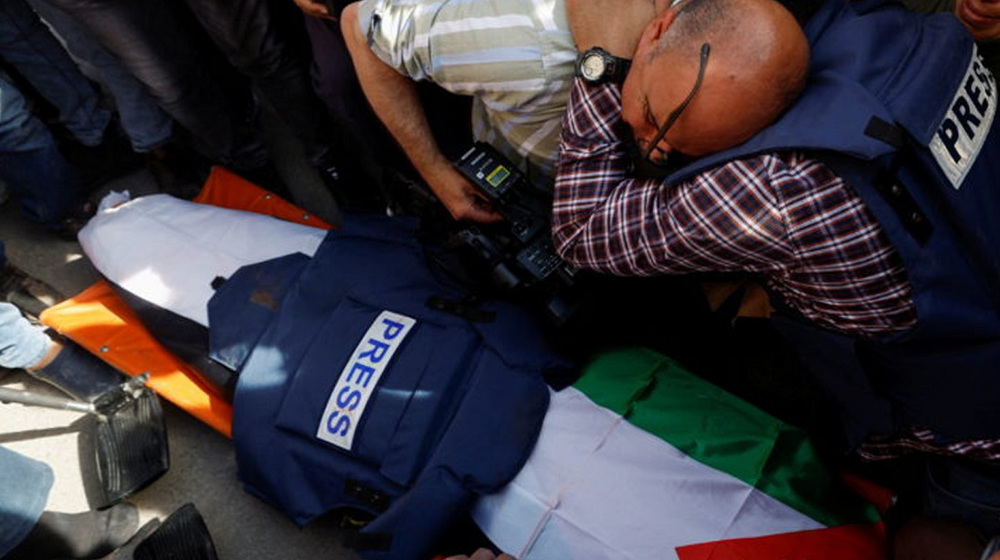
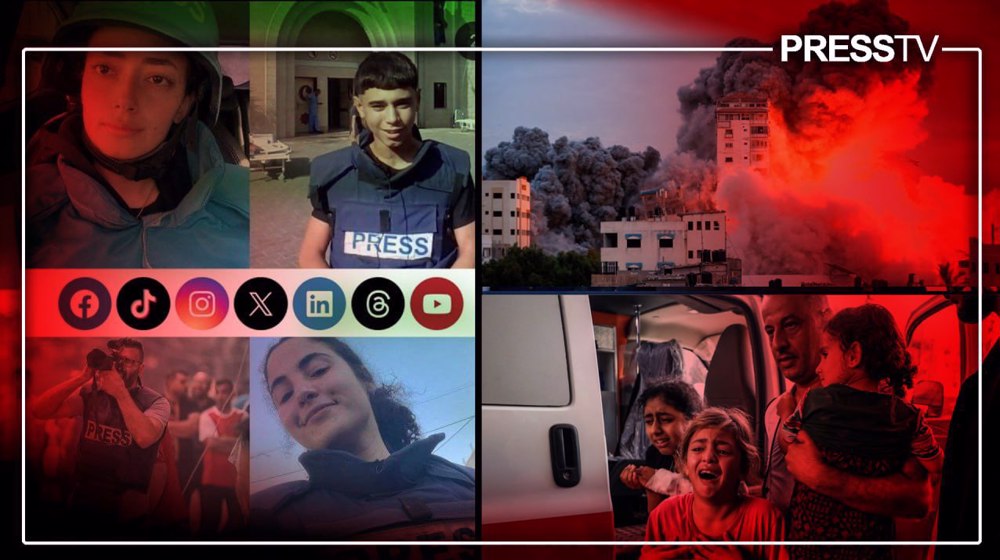
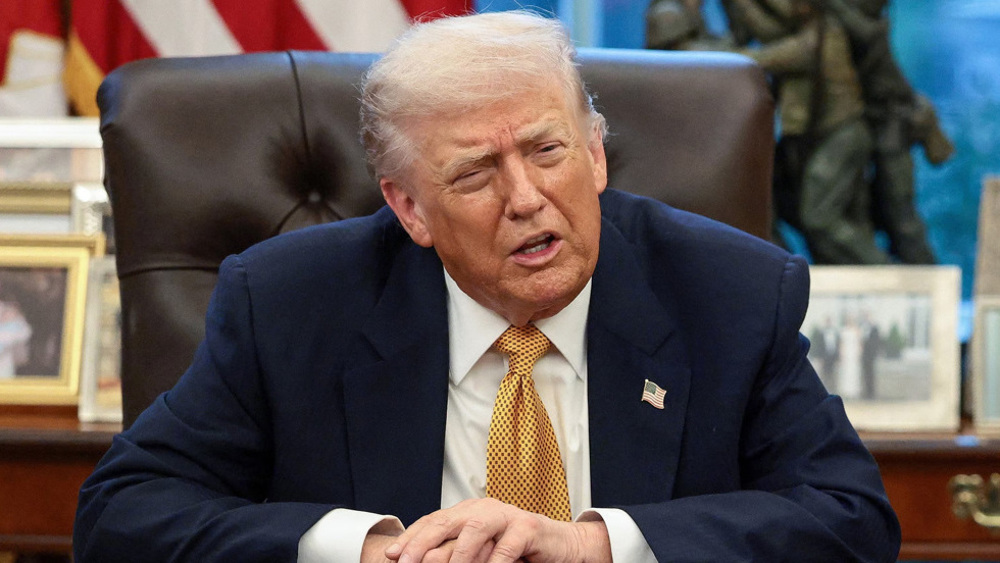
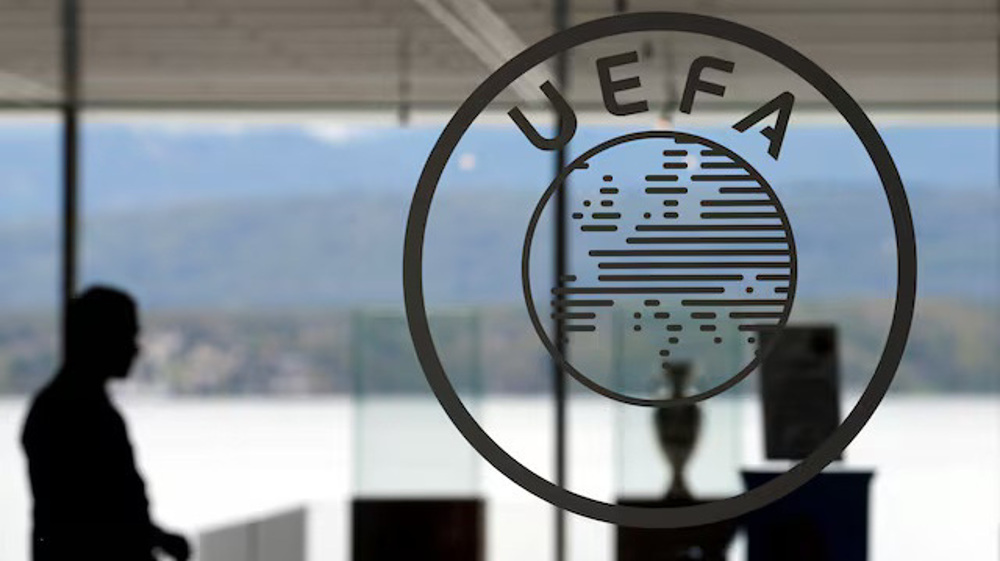




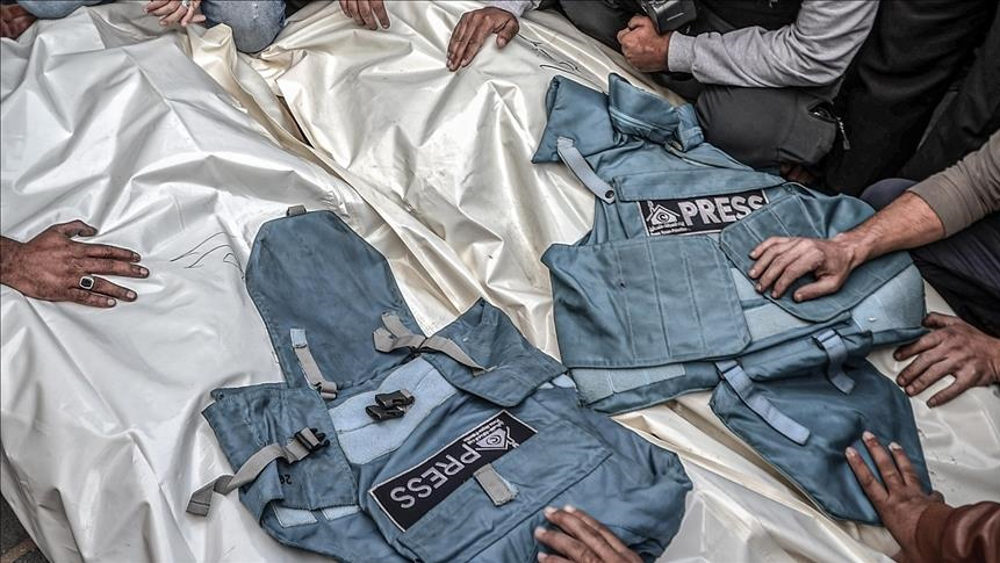

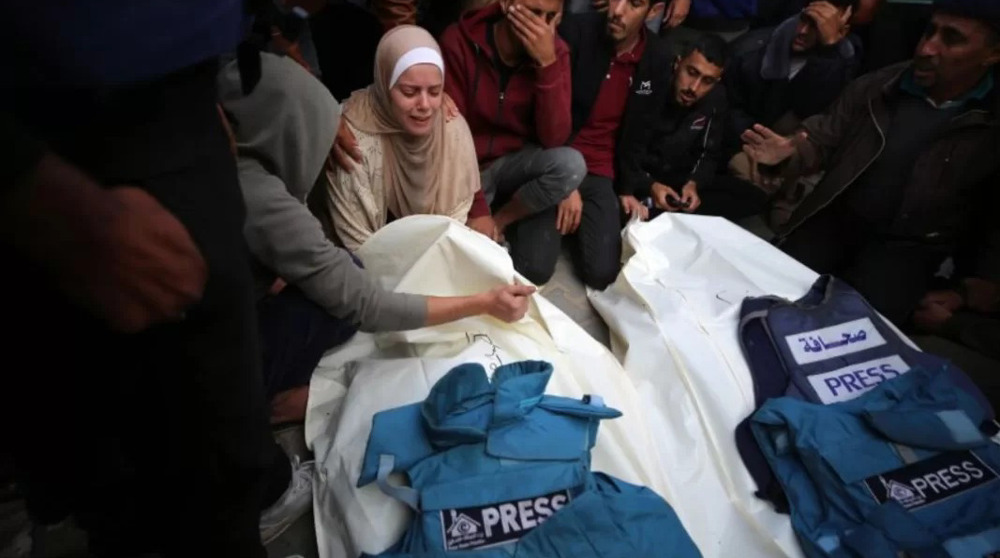

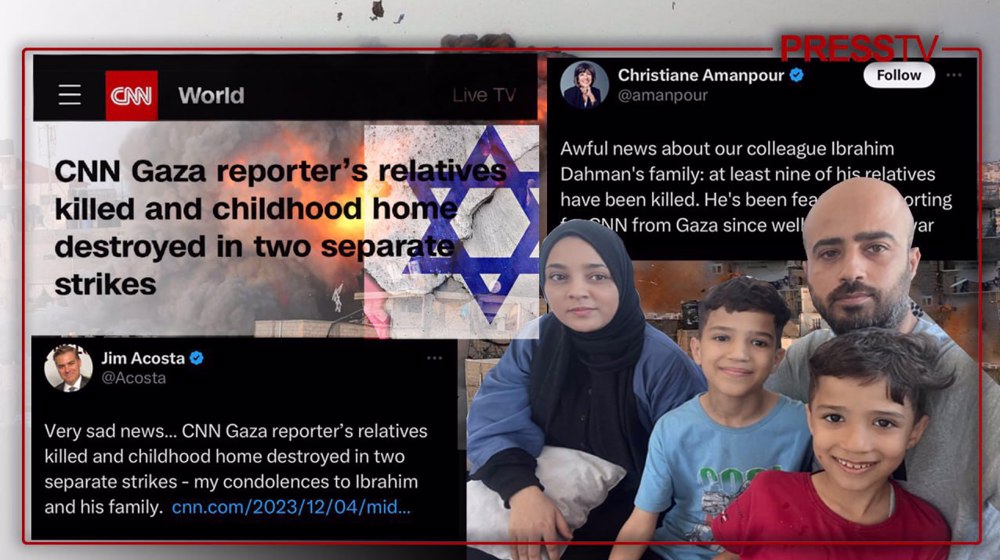

 This makes it easy to access the Press TV website
This makes it easy to access the Press TV website